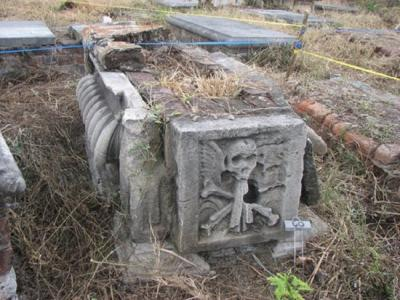
Bamidbar (במדבר – In the Wilderness)
Numbers 1:1–4:20 and Hosea 2:1–22
In the wilderness of Sinai, God commands Moses to take a census of the children of Israel and establish an organized structure for the people, defining the arrangement of the camps, the order of march, and the distribution of tasks. The prophet Hosea discusses Israel’s destiny through a symbolic perspective, comparing the people to the sand of the sea, illustrating their growth and continuity.
Hosea 2:1
וְהָיָה, מִסְפַּר בְּנֵי-יִשְׂרָאֵל, כְּחוֹל הַיָּם, אֲשֶׁר לֹא-יִמַּד, וְלֹא יִסָּפֵר
Yet the number of the children of Israel shall be like the sand of the sea, which cannot be measured nor counted.
Hosea uses this powerful image to recall the original covenant [1] with the patriarchs and highlight the continuity of the divine promise across generations.
Jewish presence in Jamaica dates back to the mid-17th century, when Sephardic Jews fleeing the Spanish Inquisition [2] sought refuge on the island under British rule. The Kahal Kadosh Sha’are Shalom Synagogue in Kingston stands as a testament to the local Jewish history. Built in 1885, it was destroyed in 1907 by a devastating earthquake that struck much of the city. In the aftermath, the six Henriques brothers united to help rebuild both the synagogue and Kingston itself. Completed in 1912 in a British colonial style, the synagogue is distinguished by its 52-stop pipe organ. However, what makes it particularly remarkable is its white sand-covered floor [3]—a tradition inherited from the Jews of the Iberian Peninsula, used to muffle the sound of their prayers.
Adjacent to the synagogue, the Museum of Jamaican Jewish History is renowned for its rich Judaic collection, one of the most remarkable in the Caribbean.

Yet Kingston’s Jewish history is not limited to displayed artifacts—it is also inscribed on the tombstones of Hunt’s Bay Jewish Cemetery, some of which bear the Jolly Roger [4], a symbol associated with Sephardic Jews [5] who became privateers.
[1] Biblical promise: “I will bestow my blessings upon you; I will multiply your descendants like the stars of the heavens and like the sand on the seashore, and your offspring shall possess the gates of their enemies.” (Genesis 22:17)
[2] Spanish Inquisition: Established in 1478, it led to the persecution of Jews, notably through the expulsion decrees of Spain in 1492 and Portugal in 1497. Some Jews sought refuge in the colonies as early as the 16th century, but since Jamaica was under Spanish rule until 1655, Jewish presence remained limited until the English conquest.
[3] Sand: Besides discretion and the covenant, another explanation is that it symbolizes the Sinai wilderness.
[4] Jolly Roger: The famous pirate flag depicting a skull and crossed bones—a Memento Mori (“Remember that you will die”)—used by some Jewish corsairs and privateers.
[5] Notable Jewish figures in piracy in Jamaica and the Caribbean:
– Moses Cohen Henriques (1595–after 1681) – A Sephardic Jew who fled the Spanish Inquisition, he made history in 1628 by helping Dutch admiral Piet Pieterszoon Hein (1577–1629) capture a Spanish fleet carrying gold and silver, a loot estimated today at one billion dollars. After the Portuguese reconquest of Brazil in 1654, he sought refuge in Jamaica, where he contributed to the establishment of the Jewish community and is believed to have advised the famous privateer Captain Morgan (Sir Henry Morgan, 1635–1688) in Port Royal.
– David Abrabanel (17th century) – Known as “Captain Davis,” this Jewish privateer commanded the ship “Jerusalem” and carried out independent raids (without official commission) against the Spanish in retaliation for the persecution suffered by his family.
– Yaacov Kuriel (17th century) – A former Spanish captain, captured by the Inquisition, he was freed by his own sailors, most of whom were Marranos. He then took to the seas with three ships and led attacks against the Spanish in the Caribbean.



